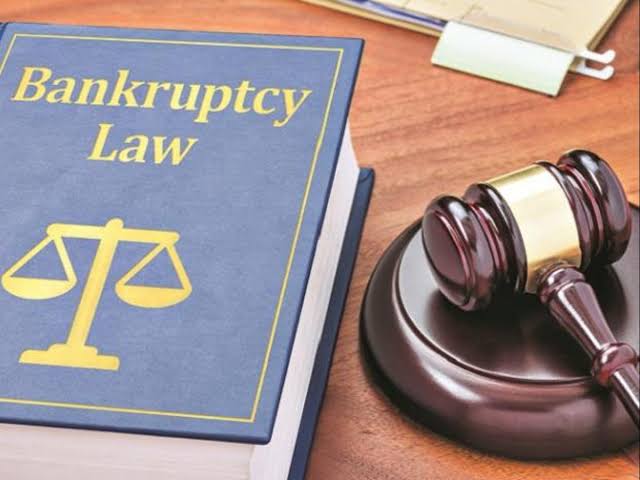By Shlok Parekh- Advocate, Bombay High Court
Parekhshlok24@gmail.com | Nov 30, 2020
History of the Doctrine
The Clean-Slate doctrine was developed in the late 19th century under the influence of voluntaries theory, which dominated the International Law during that period. According to the said theory, the sovereign state can only enjoy rights and incur obligations to which they consent. Therefore, the rights and the obligation of the predecessor state relating to the territory transferred cannot be considered to automatically pass to the successor state. In essence, the clean slate doctrine which meant at that point was, when a state is captured by another state, the rights and obligations of the predecessor sate cannot be considered to automatically pass to the successor state.
The Clean Slate doctrine is completely opposite to its predecessor doctrine of Universal Succession (also known as the doctrine of continuity) which provided that the rights and the obligations of the predecessor state, relating to the territory transferred, as transmitted to the successor state. Thus, the successor state gains the treaty rights and obligations of the predecessor state, relating to the territory transferred. As well as, the successor state inherits the public property and the debts belonging to the predecessor state relating to the territory transferred.
Both the Universal Succession and the Clean Slate doctrine have been highly criticized by the scholars. It has been argued that neither doctrine makes sense with respect to cases of cession of territories.
Examples of both the “universal succession” and the “clean slate” doctrines can be found in the practice of States. Thus, while the “universal succession” doctrine governed the emergence of Dominions, such as Canada, as independent States, the “clean slate” doctrine was invoked by Israel. However, State practice rarely reflects either the “universal succession” doctrine or the “clean slate” doctrine in their entirety. In most cases of State succession, some rights and obligations relating to the territory transferred are transmitted from the Predecessor State to the Successor State, while others are not.
Clean Slate in IBC
The doctrine of Clean Slate finds its roots in the Insolvency and Bankruptcy Code (“Code”) in the newly introduced Section 32A read with Section 31(1) of the Code. The theory of clean slate has also been put into effect by the Hon’ble Supreme Court of India in the landmark judgment of Committee of Creditors of Essar Steel India Ltd. v. Satish Kumar Gupta & Ors.[1], (“Essar Steel Judgment”) decided on 15th November 2019.
The doctrine of Clean Slate in IBC comes into effect only after the Resolution Plain is approved by the Committee of Creditors, which is to say that the said Resolution Plain is binding on all the stakeholders, including the guarantors. Therefore, in order to explain the same, His Lordship the Hon’ble Mr. Justice R. F. Nariman stated the following in the Essar Steel Judgment:
“66- Section 33(1)of the Code makes it clear that once a resolution plan is approved by the Committee of Creditors it shall be binding on all stakeholders, including guarantors. This is for the reason that this provision ensures that the successful resolution applicant starts running the business of the corporate debtor on a fresh slate as it were”
The Supreme Court therefore has interpreted Section 31(1) of the Code to say that the successful Resolution Applicant should start running the revived company on a fresh slate vis-à-vis adopting the doctrine of clean slate. The Supreme Court has laid down the emphasis on the revived company starting a new life and therefore the doctrine of clean slate is important, so that the revived company is not burdened with the litigations and outstanding dues of the old company.
It is pertinent to note that the Counsel for one of the parties in the Essar Steel Judgment argued that in Section 60 (6) (which is for computing period of limitation specified for any suit or application by or against Corporate Debtor and excludes the period of moratorium), the legislation has intended to allow litigations to continue even after the CIRP process has ended. This argument was negated by the Supreme Court to say the following:
“67- For the same reason, the impugned NCLAT judgment in holding that claims that may exist apart from those decided on merits by the resolution professional and by Adjudication Authority/Appellate Tribunal can now be decided by an appropriate forum in terms of Section 60 (6) of the Code, also militates against the rational of Section 31 of the Code. A successful resolution applicant cannot suddenly be faced with “undecided” claims after the resolution plan submitted by him has been accepted as this would amount to a hydra dead popping up which would throw into uncertainty amounts payable by a successful resolution applicant who successfully takes over the business of the corporate debtor. All claims must be submitted to and decided by the resolution professional so that a prospective resolution applicant knows exactly what has to be paid in order that it may then take over and run the business of the corporate debtor. This the successful resolution applicant does on a fresh slate, as has been pointed out by us hereinabove. For the reasons, the NCLAT judgment must be set aside on this ground.”
Therefore, by virtue of the Essar Steel Judgment, the Supreme Court has made it amply clear that, the doctrine of clean slate applies to the Code, pursuant to the Committee of Receiver and thereafter the Adjudicating Authority accepting the Resolution Plan. The Supreme Court’s analysis is logical as much as to say that the Resolution Applicant, in order to take over the Operational/Financial Creditor, will be bringing in a huge sum of money to pay all the debts and therefore after having paid the said debts, it would be unfair to then burden the Resolution Applicant with undecided claims, which can in some cases be a loss making proposition for the Resolution Applicant. Assuming the situation, if the Resolution Applicant is burdened with the undecided claims, no company would want to come forward and take over a company which has undecided debts even after paying a reasonable high amount and therefore the same will defeat the very purpose of the Code, which is to revive the insolvent company. Therefore, in order to give effect the main objective of the Code, it was utmost important for the Supreme Court to introduce the doctrine of clean slate and in the Code.
Pursuant to the Essar Steel Judgment, the Rajasthan High Court in Ultra Tech Nathdwara Cement Ltd. v. Union of India [2] also applied the doctrine of clean slate. Ultra Tech has taken over Binani Cements after emerging as a successful Resolution Applicant and had paid all the dues as admitted by the Resolution Professional in terms of the Resolution Plan. The GST department demanded GST dues from Ultra Tech of Binani Cement until the date of approval of the Resolution Plan. The Hon’ble Court held that no new demands as to any claims can be raised by any creditor after the acceptance of the Resolution Plan, which is the date the Resolution Applicant successfully takes over the company.
The only debatable point which arises is that the Code does not provide for extinguishment of proceedings. The proviso under Section 14 states that “moratorium shall cease to have effect from the date of the approval of the Resolution Plan” which seems to suggest that adjudication of claims, which are in dispute before the appropriate forum may continue, after the moratorium comes to an end. The doctrine of clean slate seems to have not settled this facet in a way. The discrepancy arises to an extent that, if the disputed claims are to be adjudicated after the end of the moratorium, then is the section suggesting that the successful Resolution Applicant should be burdened with undecided claims, even after having paid the required amounts as decided by the Resolution Professional. Therefore, for the purpose of argument, this section negates the doctrine of clean slate and hence the interference of the Supreme Court is required for the same.
Conclusion:
In view therefore, though Supreme Court has very explicitly made the applicability of the Doctrine of clean slate as a part of the Code, but there still lies a discrepancy when the observations of the Supreme Court are read with the provisions of the Code, more specifically being proviso to Section 14 of the Code. The said proviso was not dealt by the Supreme Court in the Essar Steel Judgment, and therefore it is assumed that sooner or later, the Supreme Court is going to get one more opportunity to interpret the doctrine of clean slate again.
[1] Civil Appeal No. 8766-67 of 2019
[2] D.B. Civil Writ Petition No. 9480/2019- Rajasthan High Court (Jodhpur Bench)







